I have the following circuit:
The MCP1402 MOSFET driver should be driving the BUK7Y13 N-channel MOSFET at 12V, but I'm seeing a much weaker signal which oscillates around 0.7V, preventing the gate from turning on the MOSFET.
- The load being driving is just 3 LEDs and a resistor in series, as described here. I've tried both a full strip, and a short section with just 3 LEDs.
- I have tried adding an additional 4.7uF polarized capacitor between 12V and GND, to no effect.
- I have three of these circuits and they all exhibit the same symptoms, so it's not faulty components.
- Even with no load (no LEDs) the MCP1402 gets hot to the touch, but I don't think anywhere near it's max temperature.
- I had previously tried the same circuit but with a FAN3229 driver and no R2, but got similar results.
The FET has a gate charge of 5nC and the driver can put out 500mA - this seems fine to me, but the circuit is not working and I'm at a loss. I presume there's something I haven't understood about the use of a MOSFET driver but I can't see what.
Edit:

Here's an excerpt from the layout - there is a plane to the right of the right blue line which which is "SG" in both diagrams, connected to the low side of the LEDs. And the plane on the left of the left blue line is GND. The other two connects, PWM to control and the connection to the driver are clear.
Pin 4 is the gate as you can see, pins 1-3 are the source to GND and the tab/base is the drain to SG.
"With no load" means with no LEDS being driven by the circuit, and yes I have confirmed with a scope a nice 5V square wave coming in from my MCU, so the signal is correct. I should also add I do see a very, very faint flicker on occasion from the LEDs, as I would expect with the gate switching partially on.
Edit 2:
Having ruled out the obvious, here's the full circuit and layout which I didn't post before for the sake of clarity.
Polygons SG1, SG2 and SG3 are red(top)/blue(bottom) to right of board, connected with many (thermal) vias. 12V polygon is blue(bottom) on lower half of board, GND is blue(bottom) on upper half and red(top) on most of the board. Power supply is large desktop supply and MCU is functioning as programmed at 5V, LED1 is working, PWM to drivers is working, it's just signal from the drivers. Components were all recently purchased from Farnell.
